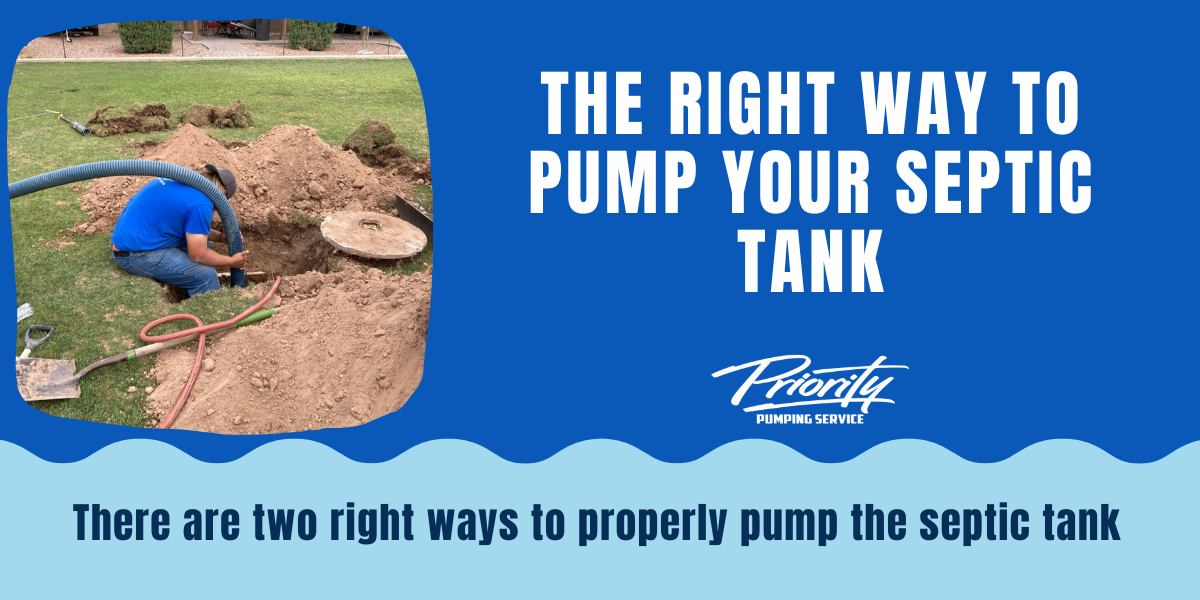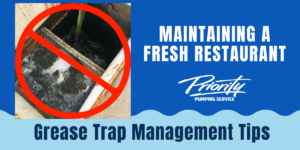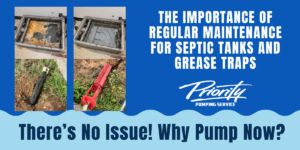I have been in the wastewater industry for over 13 years and this subject is truly one that is addressed in our office, with customers over the phone, more than a couple times a day.

- “That’s not the way it was done last time”
- “I’ve pumped it this way for years”
- The last company installed this cleanout so I wouldn’t have to dig up my lids again”
- “I don’t want you to mess up my lawn”
- “The last company pumped it from right here (shows us the sewer line cleanouts)”
The list goes on and on but I am here today to set the records straight on the right and proper way to pump out a septic tank. But let’s start at the beginning with an understanding of how septic tanks work so you can understand the need to remove all contents of the tank.
The septic tank develops three important layers: the scum layer, which floats on top of the all-important water( AKA effluent) layer, and then there is the sludge layer. When waste enters the septic tank from the home it is pushed into the water layer by the ever-important baffle. There, it will naturally separate depending on what it is.
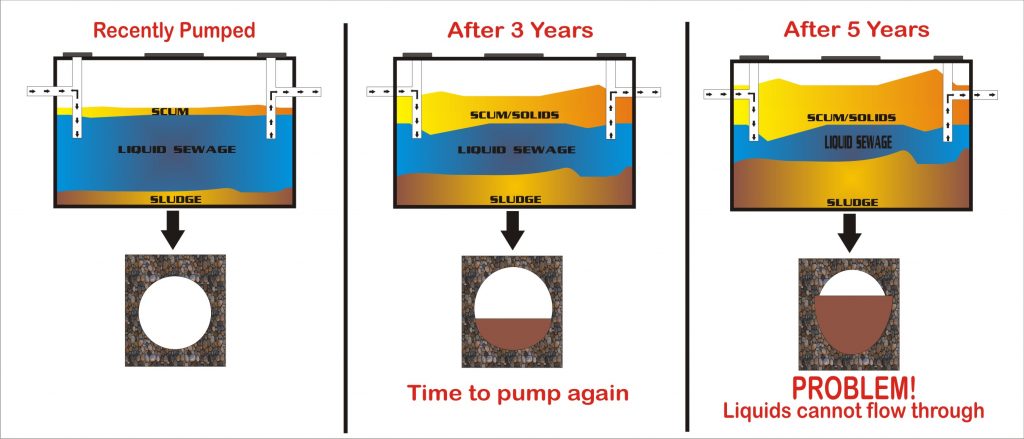
Example time: If you flush kitchen wastewater, there is probably some food or dishes residue present. That residue is most likely greasy-ish and will separate as scum from the water level inside of the tank. Let’s say it’s toilet wastwater and there is toilet paper and poop… well those will organically separate as well. The bacteria that work inside of the septic tank will further break down the scum and sludge waste for separation.
The purpose of the super important maintenance pump every 2-3 years is to remove the scum, water and sludge levels inside of the septic tank as thoroughly as possible. Why? Because it is the excess sludge and scum that will spill over into your disposal field and cause drainage failure. No one wants that – and in order to get both of those layers out properly, the pumper should be stirring the levels together as much as possible to get them ALL out of the tank.
Knowing this, I want you to picture something for me. Imagine we have 3” diameter hoses on our septic truck to pump with. If we are trying to clean ALL of that waste out of a 4” or even 6” inspection port, there will be large amounts of solids still remaining inside of the tank. This is the stuff that you MUST remove in order for a pumping service to be complete or even worth it!
If a pumper is pumping through that small inspection port, they are not doing you a favor or thoroughly pumping out the tank for maintenance. They are essentially removing a minimal amount of scum and water from the tank.
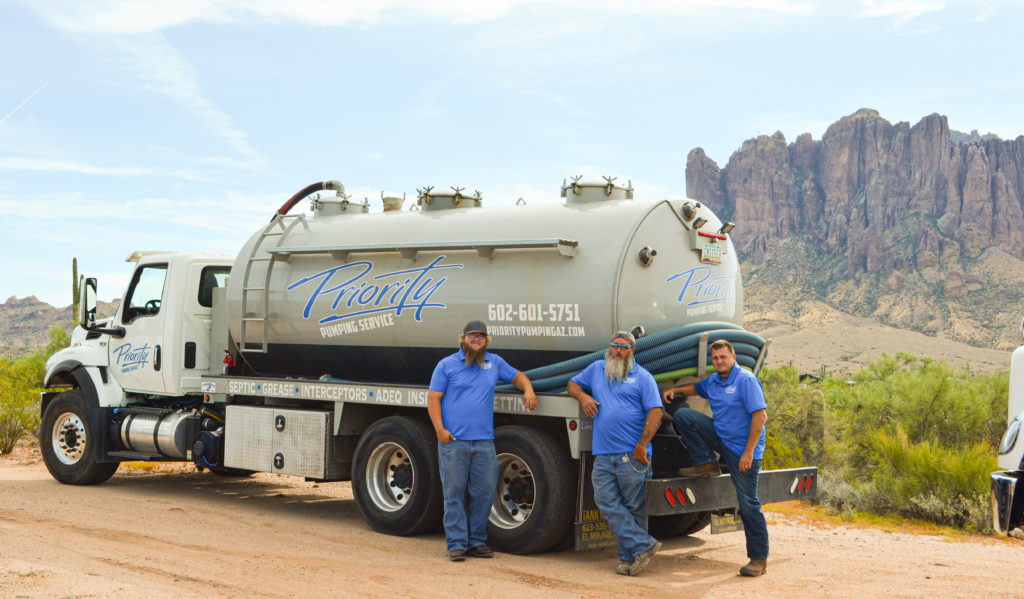
There are two right ways to properly pump the septic tank.
Option #1 - Dig Down To Tank Lids
Dig down to the tank lid openings – there may be one or two depending on the year of the septic tank. If there is one – it will be in the center of the septic tank and be about 18” in diameter. If there are two lids, they will be on the front and rear of the top of the septic tank. Both lids need to be exposed and this indicates there are two compartments in the septic tank and both should be pumped out. Super old tanks may have a “coffin lid” that needs to be slid off in order to pump.
If you are sick of having to pay to locate and dig down to those tank openings every time you need a maintenance septic tank pumping, consider installing risers to your septic tank. It’s a one time fee and then no more digging for life! Plus… it’s a super bonus if you have an effluent filter that needs to be cleaned out annually.
Side note: There is an important bacteria growth that starts inside of the septic tank and continues to grow and repopulate to help break down the solids that enter the septic tank. You do not want to pressure wash that clean. That bacteria and minimal sludge left in the bottom of the tank is a GOOD thing and should be left.
Remember, we are here to HELP! If you have any questions or would like to schedule your regular maintenance septic tank pumping, give Priority Pumping a call
602-601-5751
